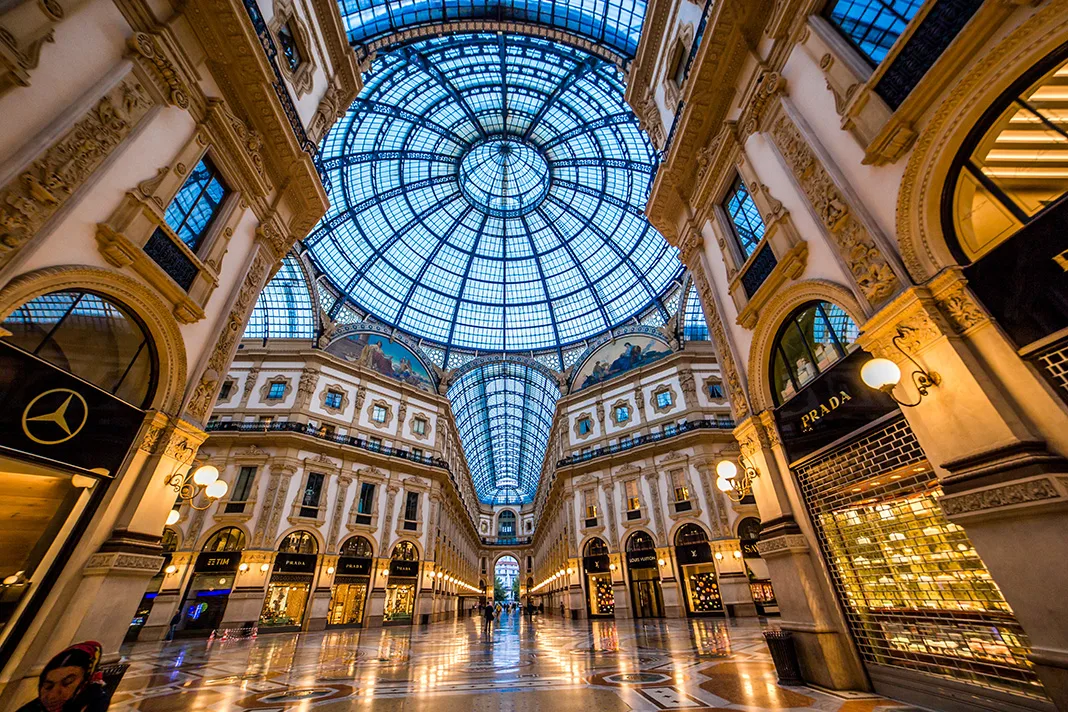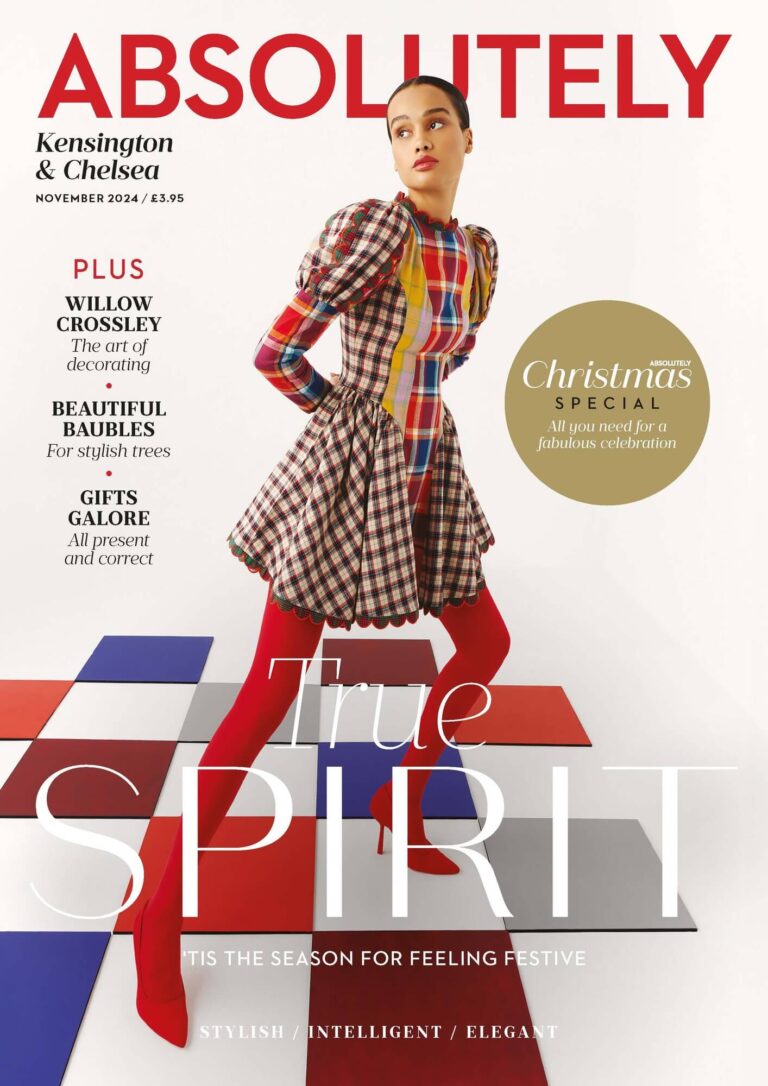As the fashion capital of the world, Milan often gets overlooked as a holiday destination, but there is much to be discovered amongst the glitz and the glamour
Words Helen Brown
Welcome to Milan…
You’ll find Rome, Venice and Tuscany occupying the top spots of many people’s bucket list, but despite the elegance and prestige its name carries – especially amongst the fashion pack – Milan barely gets a look in as a holiday destination. As the fifth most largely populated city in the EU, there’s no case to be made for it being a hidden gem. However from our short, sweet city break we see there’s a sense that it is only just beginning to realise its potential.
We base ourselves at the Mandarin Oriental, comprised of four elegant 18th century buildings just steps from La Scala. For us, on the hunt to unearth the city’s rich culture, this is perfect. Our deluxe room is spacious and boasts a seating area, desk, hardwood flooring and contemporary décor. The bathroom is fabulous, with white marble and powerful rainforest showers, while the bed is as comfortable as a cloud and guarantees a restful night’s sleep following a full day
of sightseeing.
From there, Milan’s spectacular Duomo – one of the largest cathedrals in the world – is near enough on your doorstep. This dominant landmark stands at the heart of the city, with streets sprawling out and away. The construction started in the late 1300s and took almost 600 years to complete what became a behemoth cathedral; it’s a sight to behold in pink-hued marble with a forest of spires soaring skyward. As well as exploring the inside, we paid a small fee to take a fascinating trip to the Duomo’s roof. It’s incredible to walk among the forest of spires and the view from the roof is unmatched. On a clear day you can see as far as the Alps and Apennines.If it’s clothes you came for, then you needn’t wander far. Serious shoppers will have a hole burning in their pockets as they stand beneath the glorious Galleria Vittorio Emanuele II. Facing each other across the central hall of the four-story double arcade are superstore outlets for Prada, Versace and Louis Vuitton, while Gucci and Armani are also housed within the architecturally-astounding complex. Those fashion giants could be classed as budget in comparison to the stores on the nearby Via della Spiga. The unremarkable avenue is comfortably Milan’s most prestigious and upscale shopping street – Versace’s first fashion show took place in a garage there, and since then it’s become a Mecca for millionaires. The narrow, traffic-free road is flanked by expensive label names such as Brunello Cucinelli, I Pinco Pallino, and Fabiana Filippi.
The other “F” that Milan is known for is food. Under the watchful eye of acclaimed chef Antonio Guida, the Mandarin Oriental’s two Michelin-starred Italian restaurant Seta is undoubtedly one of the city’s most talked-about dining destinations. Guida’s cooking draws heavily from Italian tradition but is given a modern, slightly Oriental twist highlighted by his extensive use of seaweed and spices.
The Mandarin Bar & Bistro stands as the beating heart of the hotel; a dramatic space with walls and floor carpeted in black and white marble mosaic. With its glitzy décor, relaxed atmosphere and eclectic mix of furniture, the bar evokes a 1920’s vibe. Expect to find the city’s most discerning style crowd here. Evenings at the Mandarin Oriental bar are defined by two distinguished moments; aperitivo and after dinner. We settle in on the first evening and are immediately and unsurprisingly enamoured by the cocktail offering. The mixologists expertly surprise visitors by adding an Oriental twist to classic Italian cocktails. We follow with bar snacks that fuse tastes of the Orient with classic Italian cooking and a delectable meal of sea bass and lamb.We enjoy a leisurely breakfast each day outside in the bistro’s courtyard; a morning sun trap clustered with casual seating and verdant greenery. The buffet offers everything you’d expect from an upmarket stay, while classic egg dishes, Asian twists and hot plates are available from the a la carte menu.
For a light lunch just a short tram ride from the Mandarin Oriental, LuBar promises ‘slow street food,’ such as Sicilian almonds and arguably the city’s best arancini. The patio, adorned with flowers and hanging vines is beautiful for an aperitivo too. Be sure to arrive relatively early; though the place may be a hidden gem amongst tourist, it’s a favourite with Milanese locals.
Brera is another short stroll from the hotel and is highly recommended for a taste of the traditional Italian trattoria. This part of town comes alive in the evenings, with outdoor restaurants serving food well after midnight. Prices are slightly more expensive than most cities in central Europe for food and drinks, but the things that you can do and see for free ensure that a day out sightseeing doesn’t have to be costly.
Milan is dotted with beautiful little chapels that are free to admire and peruse. The Basilica di Santa Maria is a handsome church that boasts some of the city’s best sculpture, fresco and sgraffito. While this in itself is a talking point, the church attracts swarms of tourists for Milan’s most famous mural, Leonardo da Vinci’s The Last Supper, which is tucked away on a wall of the refectory. It’s one of the world’s most iconic images and consequently requires advanced booking.
On the way back to the hotel, we end up at Sforza castle, a gigantic, sun-baked bastion built around a complex of 15th Century fortresses, castles and towers. Now, the structure houses many collections of art and sculpture from the Middle Ages to the 18th Century and stands as a gateway to Sempione Park. This huge green space is off-the-beaten path of Milan’s sightseeing and blissfully stands away from the hustle and bustle. Meander amongst the trees to unearth a wealth of unknown attractions including an aquarium, sports stadium and a Napoleonic arch. It’s a fitting end to a fantastic trip in which we see that much of Milan’s beauty is yet to be discovered.







